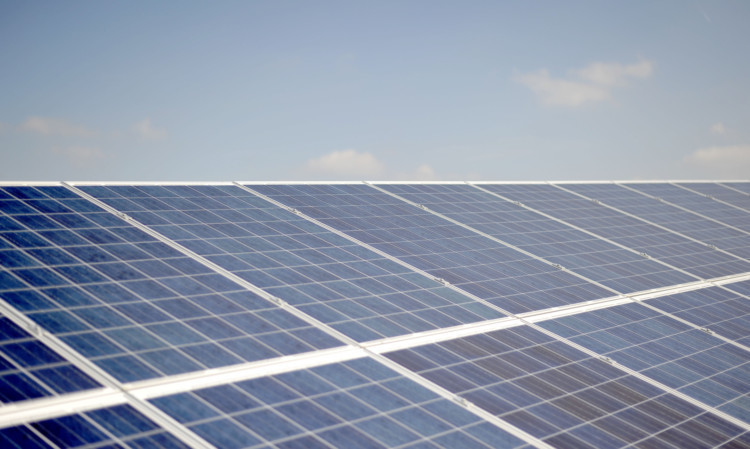The landowner behind a giant solar farm development on the Dundee-Angus border is determined to go ahead with his plans, despite competition from a rival green energy project.
Charles Simmers believes filling the site of the former Tealing airfield equivalent to 70 football pitches with solar panels represents a better use of the land than losing most of it under a giant sub-station for the Seagreen windfarm in the North Sea.
The financial stakes are high, as the value of the land with a solar farm could reach £15 million 15 times more that its present market value, which Seagreen would aim to pay to progress their scheme.
The solar farm project could also net Mr Simmers and his joint venture company an annual income of up to £123,000 a year from the electricity generated by the panels.
The Seagreen project at Tealing has already received outline consent from Angus Council.
Cables carrying electricity from North Sea wind turbines would be brought to the surface and connected to a large substation to be fed into the national grid.
The development would fill most of the former wartime airfield, but it depends on detailed planning permission and successful negotiations with Mr Simmers and more than 20 other landowners on the route of the cables from the Angus coast.
The landowners have so far rejected Seagreen’s offers and the next step could be compulsory purchase proceedings and perhaps a public inquiry. Seagreen have not yet applied to Angus Council for detailed planning permission and they may not be able to quickly proceed with their plans.
Mr Simmers and his partner company intend to submit a formal application for the solar farm within a month, however, and hope to have their project harvesting the sun’s rays for electricity in 2015.
Mr Simmers, who lives in Aberdeenshire, has taken over the airfield site from his father Arthur, whose company operated it as a pig farm for many years.
Yesterday a spokesman for the landowner said: “He is very keen to go ahead with the Tealing solar farm project.
“It would be one of the first commercial solar farms in Scotland and would put the area at the forefront of this new green energy technology.
“It would be a better use of the site as it would still be available for agriculture.
“The panels would be on stands three metres above the ground and sheep could still graze below them.
“If the substation is built the land would be lost to agriculture and that would be detrimental to the rural environment.”
The site’s sale to Seagreen could be financially advantageous to Mr Simmers especially if it reaches the £15 million market value but his spokesman added that of the two options Mr Simmers would prefer to operate the solar farm.
Seagreen last night declined to comment on the situation.
